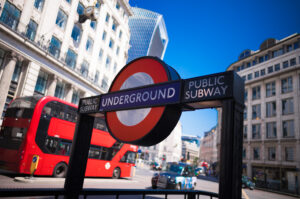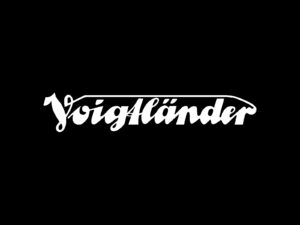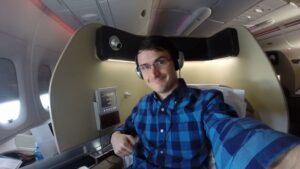I’ve recently subdivided my house into 2 new houses in Australia. Subdivision is becoming a common practice here where you take an older house on a larger block, in my case an 18m wide bock, demolish the house and split it into 2 new blocks, for me 2x 9m wide blocks, and build 2 new houses. You can also if you have a big backyard and want a capital gain, subdivide off your backyard and sell it as a new block of land someone will buy to build a new house on.
Like the buying investment properties or renovating old run down houses fad of the early 2000s in Australia, thanks to the renovation and realestate TV shows of the time, subdivision is becoming a popular activity. If you can make it work, the financial benefits can be great, if you don’t plan ahead by working backwards though your financial strategy for the subdivision project, your best case scenario may be breaking even with 12-18 months of stress, or loosing a significant amount of money on the project.
I’m not a financial advisor. I’m not a property expert. I’m just a blogger who has done the subdivision process once. But for me, it has worked out well, and I’m going to tell you how it worked for me, and what mistakes I avoided.
Think about the end goal and work backwards
If your end goal for subdividing a property is to make a profit by selling the 2 resulting new houses or land, work out if what you want is realistic by working your calculations backwards. Just because you are going to subdivide a property you already own or have bought doesn’t mean you are automatically going to make money from the project. If you want to make a (hypothetical) $300,000 before tax profit in a subdivision project ask yourself:
- What can I sell the 2 new subdivided properties for? What will they be worth?
- What are the government (state government, local government costs)? You will pay stamp duty on subdividing land.
- What will be the utility costs? Disconnecting old services, reconnecting new ones, because it is likely you will be paying to have part of the street dug up to attach new services.
- What are the legal costs?
- Real estate costs?
- Demolition of the old house costs?
- How much will my builder charge me to build 2 new houses realistically?
- What will be the cost to make them marketable? Paving, landscaping?
- How much, after stamp duty, loan fees, loan interest, insurance, and all the other costs associated with buying a house did the old house cost me?
It is not a case of seeing a house on the market for $300,000, buying it, knocking it down and building 2x $100,000 new home build packages and think you can sell 2 new houses for $400,000 each (total of $800,000) and netting a $300,000 profit. It doesn’t work that way. From my observations, if there is an old house on a street, new subdivided houses sell for around 20% more each, because they have the new house factor, but they have less land.
Subdivision worked out for me because I decided on my end goal and worked out how I could get there
To have a new house to live in for a while until I move on, and an investment property with tenants paying rent that covered the loan repayments for both houses. When both houses are tenanted, I will have a weekly bonus income as I will more than be covering the repayments on both houses if they are both tenanted. By the time I retire, they will be paid off, and I’ll have a passive income from them. That was my goal: A new house to live in without having to pay anything for it, because I would be borrowing money and having a tenant pay it back for me.
I wrote this goal down years before I started the process. I pinned it on a wall to remind me every time I walked into the kitchen. Write down your goal in pursing a subdivision project. Work out what else you need to do to get there.
For me, step 1 was to get rid of any loan on the old house. My old house on the 18m wide block was cheap. I had a plan in place to pay off the mortgage quickly and achieved that. I needed to minimise my cost base. The more the original house has cost you, the less real profit you’ll make, and it could be the difference between making money on the project, or making a financial loss.
Know what the real costs will be in subdividing
Realistically, in outer suburbia in my state an old 3 or 4 bedroom house that has seen better days can be had for $300,000. When you factor in the other costs of buying that, stamp duty can be around $11,000, loan fees, interest, insurance, just owning that house for 12 months before the subdivision process could cost you ~$320,000 if you are lucky. The bank will probably only lend you around 85% of the value of the house to avoid mortgage insurance so you’ve parted with $45,000 in cash savings as well as a part of the process so far.
While you may see some builders offering a 3 or 4 bedroom house built for $100-$120,000, realistically you will spend more than that to make the houses marketable, or attractive to tenants/buyers. Think garages with electric roller doors as oppose to car ports, ducted reverse cycle air conditioning, verandahs, paving, landscaping, water tanks, NBN connection, fencing, and these days, solar. So to build a new small family home that is marketable, realistically could cost $150,000. Multiply that by 2 is $300,000. One may cost more than the other for differences in footings or the slope of the land.
Then there are the council fees: Development approval, demolition approval, construction approval, plans assessment, and the general admin and application fees. Think $3,000.
Stamp duty, surveying for subdividing land: $15,000.
Demolition of your old house will cost around $10,000 to $15,000 depending on the challenges of the block and if there is asbestos present.
Disconnecting the old services, and getting new meters placed could be another $1,000 to $4,000 or more depending on where they will be.
Do you see where this is going? If you can realistically only sell the new houses for $360,000, lets take them down to $345,000 each to allow for agents fees, interest on loans, council rates, insurance, the profit on you buying a $300,000 house and subdividing, going through the whole process with the government and then building 2 new houses will be…..drumrolll….around $33,000. That isn’t a lot for 18 months work. Especially when you will also be paying tax on that.
For subdivision to be successful, you need to minimise the cost on the original house. It probably won’t work out just by buying a new house and going ahead with the project. Subdivision could work on a house you have bought and paid off quickly with lodgers or if it has been an investment property you have held for maybe 10 years or more and got rental income from. The days of buying a house in Australia and seeing it increase in value by 150-200% in under a year are gone. We only saw that between 2000-2010 when everyone was high on the first home own grant and new home buyers were buying like crazy, desperate to spend and driving up prices unrealistically.
So I prove my point: I realised I had to minimise my cost base on the old house to make it work, otherwise it wouldn’t be viable. By paying off my old house, I only needed to burrow just under $300,000 to fund the entire project. Eg, Borrow $300,000 = 2 new houses. It is actually a small sub $150,000 loan on each house. I didn’t want to part with savings, my goal was for this to be new houses that cost nothing. What I get in rent from my tenanted house next door covers the mortgage payments for both, and I get a tax benefit on the investment property as well. In the future, I’ll be able to rent out the house I’m living in and enjoy a small income.
Is subdividing a house for you?
These are the things to think about when subdividing. It certainly isn’t a guaranteed success story property gurus writing books would have us all believe. You can subdivide into new houses to sell, to rent out, or live in one and sell or rent the other. It is up to you. But, to make the whole process work for you define your reason, your goal, for the project and do a reverse calculation using real numbers to see if it will work.





































































